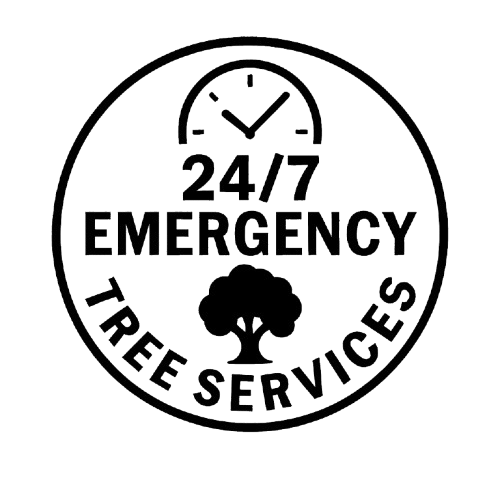Responding to the Threat of Invasive Species
Invasive species seriously threaten the longevity and general well-being of New York City’s urban forest. These non-native organisms, often unintentionally introduced through global trade and travel, can cause devastating damage to trees and local ecosystems. Without natural predators to control their population, invasive species spread rapidly, disrupting biodiversity and harming the environment. Residents, city officials, and organizations must collaborate to monitor, manage, and mitigate the risks posed by these species. Key Takeaways: Invasive species are a growing danger to NYC trees: Invasive pests like the Asian Longhorned Beetle and Emerald Ash Borer can weaken or kill trees, leading to environmental and economic costs. Recognizing these threats is crucial to maintaining a healthy urban forest. Early detection and community involvement: In addition to city actions, residents’ routine reporting and monitoring can help control the spread of these dangerous species. Effective prevention and intervention depend on increasing awareness. Comprehensive strategies: Effective responses range from applying pesticides and biological controls to supporting tree restoration efforts and biodiversity promotion through native plantings. These actions ensure that New York City’s green spaces thrive despite the ongoing threat of invasive species. Overview of Invasive Species in New York City Non-native creatures unintentionally or purposely brought into new settings are known as invasive species. In their new surroundings, these species often lack natural predators or controls, which allows them to reproduce rapidly and spread unchecked. Invasive species can disrupt local ecosystems by outcompeting native species for resources, introducing diseases, or directly damaging plants and trees. Their presence can significantly alter urban forests’ landscape, biodiversity, and health, such as those in New York City. Historical Impact on New York City Trees: New York City has a long history of battling invasive species that have damaged its trees and urban greenery. Being a global trade and tourism center, the city is especially susceptible to the influx of alien species. In the past, species like the Chestnut Blight in the early 20th century decimated native tree populations, transforming the landscape of urban and rural areas alike. Millions of trees were also lost due to the Dutch Elm Disease. These historical examples show the potential devastation invasive species can cause, making current threats an urgent concern for city officials and environmental groups. Examples of Invasive Species Currently Threatening New York City Trees: Asian Longhorned Beetle (ALB): The Asian Longhorned Beetle is a wood-boring pest primarily targeting hardwood trees such as maples, birch, and willow. It was first detected in New York City in the 1990s. These beetles lay eggs inside tree bark, and as the larvae develop, they burrow through the tree, eventually killing it. Despite significant efforts to control ALB populations, it remains a serious threat to New York City’s urban forest. Spotted Lanternfly (Lycorma delicatula): First spotted in the U.S. in 2014, the spotted lanternfly has recently become a significant problem in New York City. This insect feeds on the sap of trees, particularly the Tree of Heaven, but it can also affect grapevines, fruit trees, and other vegetation. Its quick spread has raised concerns since it weakens plants and trees, making them more vulnerable to illnesses and pests. Emerald Ash Borer (Agrilus planipennis): The Emerald Ash Borer, a beetle native to Asia, has caused widespread destruction of ash trees in North America since its discovery in the early 2000s. Ash trees are an essential component of the urban environment in New York City, and the Emerald Ash Borer is responsible for the thousands of ash trees that have died. The beetle’s larvae feed on the inner bark of ash trees, disrupting the tree’s ability to transport nutrients and water, leading to tree death within a few years of infestation. Gypsy Moth (Lymantria dispar): The Gypsy Moth is another invasive species that has been threatening New York City’s trees for decades. This moth’s caterpillars consume the leaves of several plants, particularly oaks. During peak infestation, they can defoliate entire trees, weakening them and making them vulnerable to disease and other pests. Although efforts to control the Gypsy Moth have been somewhat successful, it remains a persistent threat to New York City’s tree populations. Impact on Urban Forestry Damage Caused by Invasive Species: Invasive species cause widespread damage to New York City’s urban forestry in several significant ways. Tree Mortality: The direct consequence of invasive species is often tree death. Species like the Emerald Ash Borer or the Asian Longhorned Beetle kill trees by attacking their vascular systems or feeding on their bark and leaves, disrupting nutrient and water flow. If left unchecked, this can result in the rapid loss of entire tree populations. Loss of Biodiversity: Invasive species kill trees and reduce biodiversity by outcompeting native species for resources. Trees support various wildlife species, and when invasive organisms damage or destroy them, it leads to a cascading effect where other species reliant on those trees also decline. This disrupts entire ecosystems within urban areas. Economic Impact: The financial cost of managing invasive species is substantial. This includes the expense of tree removal, treatment to control infestations, and replacing dead or damaged trees. New York City, for instance, invests millions of dollars annually in addressing tree-related problems caused by invasive species. These costs also extend to loss of property value, increased energy costs (due to loss of shade), and the diminished aesthetic and environmental benefits of urban trees. Aspect Impact Tree Mortality Destruction of vital tree populations, altering city landscapes Loss of Biodiversity Reduction of native species, affecting urban wildlife and ecosystem balance Economic Impact Costs associated with removal, treatment, and replacement of trees How Invasive Species Disrupt Ecosystems: Competition with Native Species for Resources: Invasive species typically outcompete native organisms for water, sunlight, and nutrients, creating stress for native species. This imbalance forces native species to weaken, further accelerating their decline and opening the door for more invasive organisms to take over. Spread of Diseases Harmful to Local Trees: Invasive species can act as carriers for tree-specific diseases. For example, the Emerald Ash Borer directly harms ash trees




